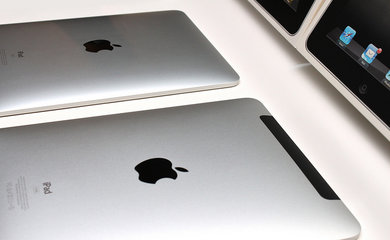Apple has been the gravitational center of hip technology for the better part of two generations. The combination of sleek design, eminently functional gadgets, cross-device syncing and mold-shattering innovations gave Apple products a universal appeal that stodgy also-rans could not replicate or overcome. Credit for this cultural dominance goes, and rightly, to the particular vision of Steve Jobs. Jobs wasn’t a flawless prophet. He dropped the ball with the G4 cube, Ping and that odd, hockey puck-shaped USB-mouse for iMac. Of course, the successes outweigh the failures and the biggest success of all wasn’t a technological one, but the creation of a lifestyle built around Apple products. Since the death of Steve Jobs, however, that lifestyle and the massive profits it creates appear in danger.
For a company built on a steady stream of innovative products releases that persistently increase its ownership of cultural mindshare, Apple appears to have lost steam. Its recent announcements have focused on software updates, which generally thrill no one. On the hardware front, even the rumors are all about new versions of existing products. While a new iPhone or iPad is likely to get hardcore Apple-junkies into a lather, the only new product in the pipeline appears to be the Apple Watch. While the Apple Watch looks to be a nifty gadget, it’s basically an iPod Nano with phone features thrown into the mix. It isn’t revolutionary, and it isn’t likely to expand Apple’s influence or lock-in its customer base.
If the creative stall continues, it will first drive away casual users, who often find new versions of iProducts negligibly different from the old versions of iProducts. Then, core users, who expect Apple to keep them on the cutting edge, will lose faith. The technological gap that made Apple products so futuristic and reliable is eroding at a phenomenal pace. Apple has enjoyed years of profit-boosting, prestige pricing, while its competitors slugged it out in commodity pricing wars. When customers can get more or less equivalent performance from any next-gen smartphone or tablet, though, purchase decisions will come down to price, rather than brand. Apple’s current trajectory will soon land its products in the category of commodity consumer technology and customer tolerance for prestige pricing on commodity products is nonexistent.
The Apple App Store, long a center for bleeding-edge cool, is also losing ground. In its heyday, Apple’s App Store had a virtual monopoly on apps and, when competitors finally jumped in, a huge numerical advantage with millions of existing apps. App developers, however, are not brand loyal. They read the writing on the wall and started creating Android-versions of their new and existing apps. With constantly growing app-libraries, Amazon, Google and Android are now in direct competition with Apple’s App Store. The diminishing numerical advantage hurts, but the loss of app-exclusivity might hurt Apple as much as it’s lost creative mojo. If customers can get Angry Birds or Flappy Bird or the Mint.com app for any mobile device, they have one less reason to pay a premium.
While Apple’s Vulcan Mind Meld with its customers won’t evaporate overnight, it seems inevitable that the company will face ongoing attrition in its customer base. This slow bleed will usher in a post-Apple generation. It’s hard to guess what the post-Apple generation might look like. Will a new company with boundless creativity and a bent for relentless innovation step in to take the place of the teetering Apple?
It’s certainly possible. Tech startups thrive on creativity, but startups are notoriously short on cash and soft on infrastructure. Technological innovation usually relies on a deep well of investment capital to support it, and building consumer technology requires a highly-developed manufacturing and distribution apparatus. Then again, maybe one of Apple’s competitors will hire a CEO with Jobs-ian vision and the ability to create a creepy, but effective, cult of corporate personality. While possible, this too seems unlikely. Innovative intuition is unpredictable, as is cult-building charisma.
The more likely scenario is that the post-Apple generation will not give loyalty to brands, but to individual devices that offer the best experience and highest utility value for pursuing personal obsessions. Features like cross-device syncing, while useful and amazing when first introduced, can be replaced at minimal or no cost by cloud storage. Music and art production – once a certified Apple fiefdom – are now handled equally well on non-Apple hardware. Skype video calling has rendered FaceTime a nice add-on, but not a deal-breaker. Outstanding design is appreciated, but it can’t win the consumer technology battle by itself.
Apple’s failure to continue producing culture-altering devices leaves it with an uncertain future. As the technological gap narrows, features become standard-issue and disposable income remains questionable, the prestige-priced allure of the Apple lifestyle will fade. People will start to seek out alternatives that better meet their needs at a lower price. If Apple’s competitors or eager startups can fill the innovation gap, they will usher in the post-Apple generation.
Photo by Yutaka Tsutano, licensed under a Creative Commons Attribution 2.0 Generic ;l

